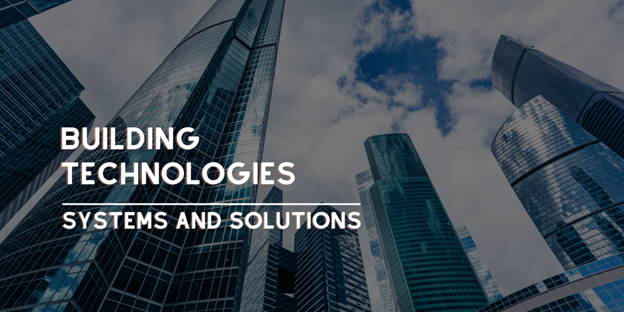
Building technologies play a crucial role in ensuring the security and efficiency of various establishments. These technologies provide essential tools to protect assets and streamline operations, from access control solutions to business security cameras.
This comprehensive guide will explore different aspects of building technologies, including access control systems, remote video monitoring and security camera solutions, to help you make informed decisions for your business.
Access Control Systems
Access control systems are fundamental to building technologies, enabling businesses to control and monitor access to their premises. These systems allow authorized individuals to enter specific areas while restricting access to unauthorized personnel.
By implementing access control systems, businesses can enhance security, prevent unauthorized entry, and live monitor employee movements.
Types of Access Control Systems
Various access control systems are available, ranging from basic keycard systems to advanced biometric technologies. Keycard systems require users to present a physical card to gain access, while biometric systems utilize unique physiological characteristics like fingerprints or facial recognition for identification.
Additionally, there are proximity card systems, keypad systems, and even smartphone-based access control solutions.
Benefits of Access Control Systems
Implementing access control systems offers numerous benefits for businesses. Firstly, they provide enhanced security by ensuring only authorized individuals can access sensitive areas. This significantly reduces the risk of theft, vandalism, or unauthorized entry.
Moreover, access control systems provide the following:
- A comprehensive audit trail.
- Allowing businesses to monitor and track employee movements.
- Enhancing accountability.
- Facilitating investigations if necessary.
Components of Access Control Systems
Access control systems have several key components that regulate access to buildings and specific areas. Understanding these components is essential for designing an effective access control system tailored to your business needs.
Access Control Software
Access control software serves as the backbone of an access control system. It allows administrators to manage user access, set permissions, and monitor the system’s performance.
With access control software, businesses can easily add or remove users, customize access levels, and generate reports on system activity.
Access Control Hardware
Access control hardware includes devices such as card readers, electronic locks, and turnstiles that physically control access to areas. Card readers read the access credentials, whether a keycard or a smartphone and grant or deny access based on the permissions set in the software.
Electronic locks secure doors and gates, and turnstiles regulate the flow of people in high-traffic areas.
Electronic Pass Control Systems
Electronic pass control systems use electronic passes, such as access cards or key fobs, to grant access to authorized individuals.
These passes are programmed with unique identifiers recognized by the access control system, allowing users to gain entry to secured areas.
Door Access Control Systems
Door access control systems are specifically designed to control access to individual doors. These systems often incorporate card readers, electronic locks, and access control software to manage entry permissions and track access activity.
Card Access Control Systems
Card access control systems rely on access cards or keycards to authenticate individuals. These cards can be swiped, inserted, or tapped on card readers to grant access based on preconfigured permissions.
Security Cameras for Business
Security cameras are another crucial aspect of building technologies, providing businesses with real-time surveillance and a deterrent against potential security threats.
These cameras help monitor critical areas, discourage criminal activities, and provide valuable evidence in case of incidents.
Importance of Security Cameras
Installing security cameras effectively deter theft, vandalism, and other criminal activities in and around your business premises. Visible cameras are a strong deterrent, preventing potential intruders from targeting your establishment.
Furthermore, security cameras can help you identify and resolve internal issues, improve employee productivity, and ensure a safer working environment.
Types of Security Cameras
A wide range of security cameras are available, each with its own features and capabilities. Some common types include dome cameras, bullet cameras, PTZ (Pan-Tilt-Zoom) cameras, and wireless cameras.
Dome cameras are typically used for indoor surveillance, while bullet cameras are more suitable for outdoor monitoring. PTZ cameras allow operators to control the camera’s movement and zoom capabilities remotely, providing flexible surveillance options.
Benefits of Security Camera Systems
Implementing a comprehensive security camera system offers numerous benefits for businesses. Apart from deterring criminal activities, security cameras constantly monitor, ensuring that potential incidents are captured on video.
This evidence can be crucial for investigations, insurance claims, and legal proceedings. Security cameras also contribute to employee safety, improve operational efficiency, and provide valuable insights into customer behavior.
Installing Security Camera Systems
When setting up a security camera system, conduct a thorough survey of your premises to identify critical areas that require surveillance. Consider factors such as lighting conditions, camera placement, and the number of cameras needed.
It is important to choose high-quality cameras suitable for indoor and outdoor environments. Professional installation and configuration of the camera system will ensure optimal coverage and performance.
Conclusion
Building technologies like access control systems and security cameras are essential for creating safe and efficient environments. By implementing access control systems, businesses can regulate access, enhance security, and monitor employee movements. Security cameras provide real-time surveillance, deter criminal activities, and provide valuable evidence. Understanding these systems’ components, benefits, and installation considerations empowers businesses to make informed decisions for their security needs.

